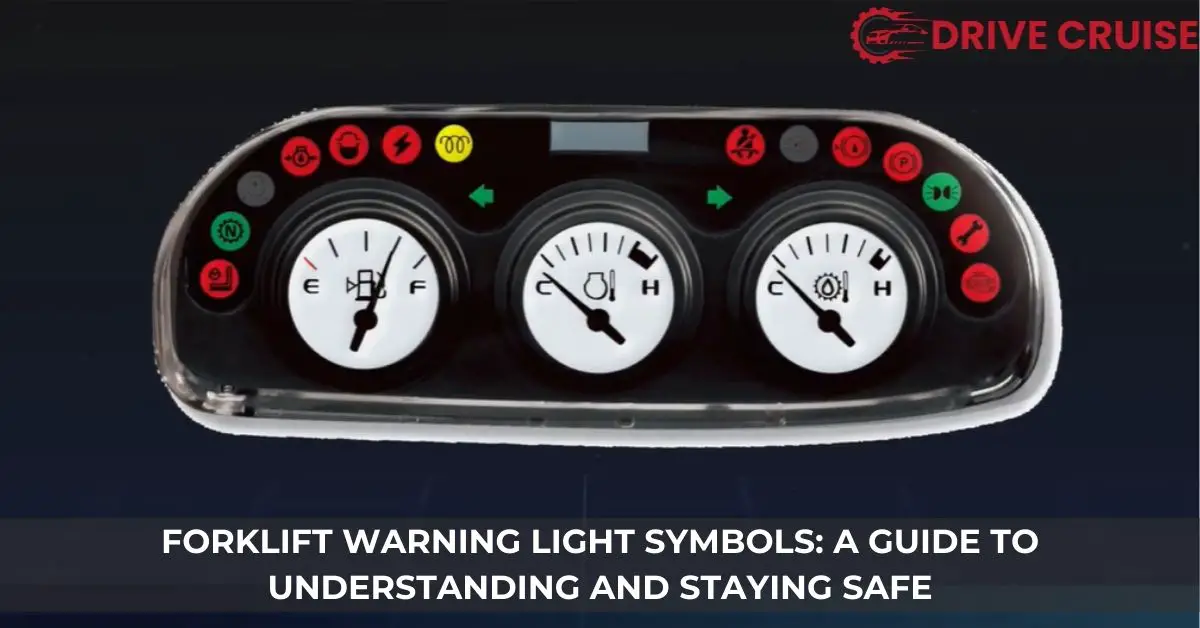Navigating the bustling floors of warehouses and construction sites, we’ve all seen those robust machines that seem to effortlessly move heavy loads from one point to another. Yes, we’re talking about forklifts. But have you ever noticed the array of warning lights blinking on their dashboards? These symbols are more than just flashy decorations; they’re crucial for safety and efficient operation.
Understanding forklift warning light symbols is like learning a new language, one that ensures we’re all speaking the same safety dialect. It’s not just for the operators but for everyone working around these powerful machines. So, let’s dive in and decode these symbols together, ensuring we’re all a bit safer and more informed the next time we step onto the floor.
Key Forklift Warning Light Symbols Explained
Building on the foundation of emphasizing the pivotal role of understanding forklift warning light symbols for safety and efficiency, we’ll now take a closer look at these symbols. Grasping the meaning behind each symbol enables workers to enhance safety measures and respond proactively to various alerts, thus fostering a safer and more efficient work environment.
- Battery Charge Indicator: This symbol usually features a battery icon, indicating the current charge level of the forklift’s battery. If this light turns on, it signals that the battery’s charge is critically low and requires immediate recharging to prevent the forklift from shutting down unexpectedly during operations.
- Oil Pressure Warning: Represented by an oil can icon, this warning light signifies that the forklift’s oil pressure is below the required threshold. Operating a forklift with low oil pressure can lead to significant engine damage. Prompt action to check and refill the oil is essential upon seeing this light.
- Temperature Warning: Displayed through a thermometer or a similar icon, this symbol alerts operators that the forklift’s engine is overheating. It’s crucial to stop the vehicle and allow it to cool down before continuing use to avoid engine damage.
- Seat Belt Reminder: This safety alert, often illustrated with a seated figure and a belt across it, reminds operators to fasten their seat belts before starting the forklift. Its presence ensures adherence to safety protocols aimed at minimizing injuries in the event of an accident.
- Check Engine Light: A light that often simply reads “Check Engine” or displays an engine icon. It indicates that the forklift’s engine needs servicing. Ignoring this light can lead to poor performance and potentially more serious engine issues.
- Lift Lockout Indicator: Often symbolized by a forklift or lift icon with a cross over it, this warning light indicates that the lifting mechanism is temporarily locked for safety reasons, possibly due to a malfunction or a specific safety protocol activation. Operators need to address the underlying issue before the lifting function is restored.
Maintenance Tips to Prevent Warning Lights
Following the understanding of forklift warning light symbols and the appropriate responses to them, it’s crucial to delve into maintenance strategies. These strategies help prevent these warning lights from illuminating unnecessarily and ensure the forklift operates smoothly. Preventative maintenance not only enhances safety but also extends the service life of the equipment. Here, we outline several tips to avoid common issues signaled by warning lights.
Regular Inspections
Conducting daily inspections before using the forklift can identify potential problems early. Look for signs of wear and tear, check fluid levels, including hydraulic oil and coolant, and ensure the battery is adequately charged. Inspections might seem time-consuming but can save significant time and resources in the long run by preventing downtime.
Scheduled Maintenance
Adhering to the manufacturer’s scheduled maintenance plan is vital. This include oil changes, filter replacements, and thorough inspections of brake and hydraulic systems by a qualified technician. Scheduled maintenance not only prevents operational issues but also keeps the forklift in compliance with safety regulations.
Battery Care
For electric forklifts, proper battery care is essential. Ensuring the battery is correctly charged and maintained can prevent the Battery Charge Indicator light from coming on. Avoid overcharging or undercharging, as both can reduce the battery’s lifespan and performance.
Cleanliness
Keeping the forklift clean from debris and dust can prevent overheating and other mechanical issues. Pay particular attention to the radiator and air filters, as clogs can lead to temperature warnings.
Training Operators
Ensuring operators are trained and aware of how to use the equipment properly can significantly reduce the risk of damage and the subsequent illumination of warning lights. Operator training should include the correct operation of the forklift, awareness of warning symbols, and the importance of reporting issues immediately.
Implementing these tips as part of a regular maintenance routine can significantly reduce the likelihood of warning lights activating. This proactive approach not only ensures the safety of the operators but also contributes to a more efficient and productive workplace.
Related Posts:

